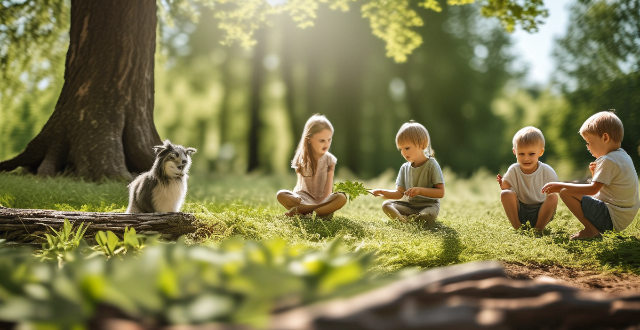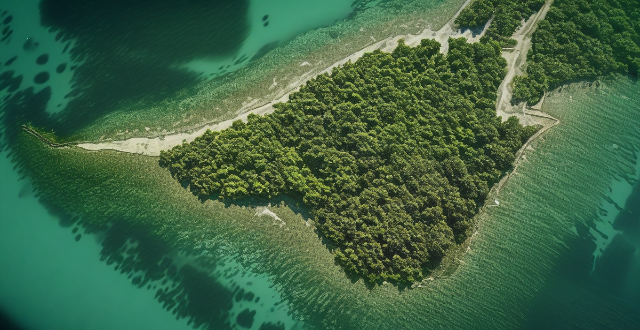Giant Surface

How long does the virus that causes COVID-19 survive on surfaces, and how should those surfaces be cleaned and disinfected ?
The COVID-19 virus, SARS-CoV-2, can survive on surfaces for varying lengths of time, depending on factors such as the type of surface, temperature, humidity, and the amount of virus present. The timeline for virus survival on surfaces includes up to 4 hours on copper, up to 24 hours on cardboard, and up to 72 hours on plastic, stainless steel, glass, banknotes, and coins. To effectively clean and disinfect surfaces, it is recommended to follow a two-step process: cleaning the surface with soap or detergent and water, and then disinfecting the surface with an EPA-approved disinfectant. Examples of approved disinfectants include diluted bleach, alcohol solutions with at least 70% alcohol, hydrogen peroxide (3%), and quaternary ammonium compounds. It is important to wear gloves when handling disinfectants, ensure proper ventilation, never mix different cleaning products, and disinfect frequently touched surfaces regularly.

What are the pros and cons of using vinegar as a cleaning agent in homemade solutions ?
Using vinegar as a cleaning agent in homemade solutions has both advantages and disadvantages. It is a natural disinfectant, deodorizer, environmentally friendly, cost-effective, and versatile. However, its acidic nature can damage certain surfaces and materials, and its strong smell may not be desirable in some environments. It is essential to understand the properties of vinegar and use it appropriately to avoid damaging surfaces or leaving behind unwanted odors.

Can regular cleaning and disinfection prevent the transmission of other viruses besides COVID-19 ?
Regular cleaning and disinfection can prevent the transmission of other viruses besides COVID-19, such as those causing colds and flu. The CDC recommends routine cleaning of frequently touched surfaces to reduce the risk of infection. Effective cleaning involves using soap or detergent to remove dirt, followed by disinfecting with a product labeled for the specific virus. High-touch surfaces should be prioritized, and proper ventilation and glove use are advised. Following these practices helps create a safer environment.

How do I make a non-toxic all-purpose cleaner using vinegar and baking soda ?
Vinegar and baking soda can be combined to create a non-toxic all-purpose cleaner. Ingredients include white vinegar, water, baking soda, a measuring cup, and a spray bottle. Mix one cup of vinegar with one cup of water and add one tablespoon of baking soda. Shake well before using on most surfaces. Test on a small area first and avoid use on certain surfaces such as marble or unfinished wood. This homemade cleaner is effective, environmentally friendly, and cost-efficient.

Is there a natural alternative to bleach that can be used for disinfecting surfaces ?
There are several natural alternatives to bleach that can be used for disinfecting surfaces, including vinegar, hydrogen peroxide, and tea tree oil. These alternatives are effective against bacteria, viruses, and fungi, and are also safer and eco-friendly compared to bleach. Vinegar is inexpensive and easy to find, but has a strong smell and may damage certain surfaces if left on for too long. Hydrogen peroxide is also inexpensive and easy to find, but can be harmful if ingested or inhaled in large quantities and may fade certain fabrics or surfaces if left on for too long. Tea tree oil is a natural antimicrobial agent that is safe for pets and children, but is expensive compared to other natural disinfectants and may cause skin irritation if not diluted properly. By using these natural disinfectants, you can keep your home clean and healthy without exposing yourself or your family to harsh chemicals.

What are some successful examples of biodiversity restoration projects ?
This article provides examples of successful biodiversity restoration projects, including the Great Green Wall Initiative in Africa, the Mau Forest Restoration Project in Kenya, the Wolong Giant Panda Reserve Expansion in China, the Coral Reef Restoration Program in the Philippines, and the Amazon Rainforest Conservation Project. These projects aim to restore degraded ecosystems through various techniques such as reforestation, reintroduction of native species, and habitat restoration, with benefits including improved livelihoods for local communities and preservation of biodiversity hotspots.

What are the must-visit photography sites for wildlife and nature lovers ?
For photography enthusiasts who have a passion for capturing the beauty of nature and wildlife, there are several must-visit sites that offer breathtaking views and unique opportunities to capture stunning photographs. Here are some of the top destinations for nature and wildlife photography: 1\. Serengeti National Park, Tanzania - Diverse range of animals, spectacular landscapes, Great Migration. 2\. Galápagos Islands, Ecuador - Unique species, marine iguanas, giant tortoises. 3\. Yellowstone National Park, USA - Geothermal features, diverse wildlife, spectacular landscapes. 4\. Amazon Rainforest, South America - Biodiversity, dense vegetation, misty atmosphere. 5\. Maasai Mara National Reserve, Kenya - Large population of big cats, stunning landscapes, Great Rift Valley.

What are the best natural ingredients for making homemade cleaning products ?
Cleaning your home doesn't have to involve harsh chemicals or expensive store-bought products. With a few natural ingredients, you can create effective and eco-friendly cleaning solutions that are safe for your family and the environment. Here are some of the best natural ingredients for making homemade cleaning products: 1. White Vinegar: A versatile and inexpensive cleaning agent that cuts through grease, disinfects surfaces, removes stains and odors, and deodorizes the air. Use it as an all-purpose cleaner, glass cleaner, or oven cleaner. 2. Baking Soda: A gentle yet powerful abrasive that tackles tough cleaning jobs without scratching surfaces. It neutralizes acidic odors, leaves no residue behind, and can be used as a sink and tub scrub, carpet deodorizer, or laundry booster. 3. Lemon Juice: A natural disinfectant and deodorizer that leaves surfaces smelling fresh and clean. It cuts through grease, leaves a pleasant citrus scent, and can be used as an all-purpose cleaner, chrome polish, or hardwater stain remover. 4. Castile Soap: A vegetable-based soap that is gentle on skin and surfaces while still being effective at cutting through dirt and grime. It is biodegradable, eco-friendly, and can be used in various dilutions for different purposes such as an all-purpose cleaner, floor cleaner, or handwash. 5. Essential Oils (Optional): While not strictly cleaning agents, essential oils can enhance the effectiveness of your homemade cleaning products by adding antibacterial properties and a pleasant scent. Popular choices include tea tree oil, lavender oil, and lemon oil.

Is there any evidence of extraterrestrial life that could be discovered through interstellar exploration ?
The search for extraterrestrial life is one of the most fascinating and enduring mysteries in science. While there is no direct evidence of extraterrestrial life, scientists continue to explore the possibility through various means, including interstellar exploration. In this article, we will discuss the potential evidence of extraterrestrial life that could be discovered through interstellar exploration. Exoplanets are one of the primary targets in the search for extraterrestrial life. Scientists have identified thousands of exoplanets using various methods, such as the transit method and radial velocity method. Some of these exoplanets are located in the habitable zone, which is the range of distance from a star where liquid water can exist on the surface of a planet. Since water is essential for life as we know it, these exoplanets are considered prime candidates for harboring extraterrestrial life. Biosignatures are signs of life that can be detected remotely, such as gases in an atmosphere that could only be produced by living organisms. By analyzing the spectra of exoplanet atmospheres, scientists can look for these biosignatures to determine if life exists on these planets. Organic molecules are carbon-based compounds that are essential for life as we know it. The presence of organic molecules on an exoplanet could indicate that life may have developed or could develop in the future. If interstellar exploration were to discover fossilized remains or other geological evidence of past or present life on an exoplanet, this would provide strong evidence for extraterrestrial life. While there is currently no direct evidence of extraterrestrial life, interstellar exploration offers many opportunities to search for signs of life beyond our solar system. By studying exoplanets, biosignatures, organic molecules, and potential fossil records, scientists hope to uncover evidence of life elsewhere in the universe. As technology continues to advance and our understanding of exoplanets grows, we may one day find definitive proof of extraterrestrial life.

What is the relationship between climate change and loss of habitat for endangered species ?
Climate change is causing significant changes in ecosystems around the world, leading to the loss of habitat for endangered species. Rising temperatures, changing precipitation patterns, sea level rise, and extreme weather events are all factors that contribute to this loss. Endangered species are particularly vulnerable to these changes due to their small populations and limited ranges. Examples of endangered species affected by climate change include polar bears, giant pandas, leatherback turtles, and amphibians. It is essential that we take action to protect these species and their habitats, including reducing greenhouse gas emissions, conserving natural habitats, and developing adaptation strategies.